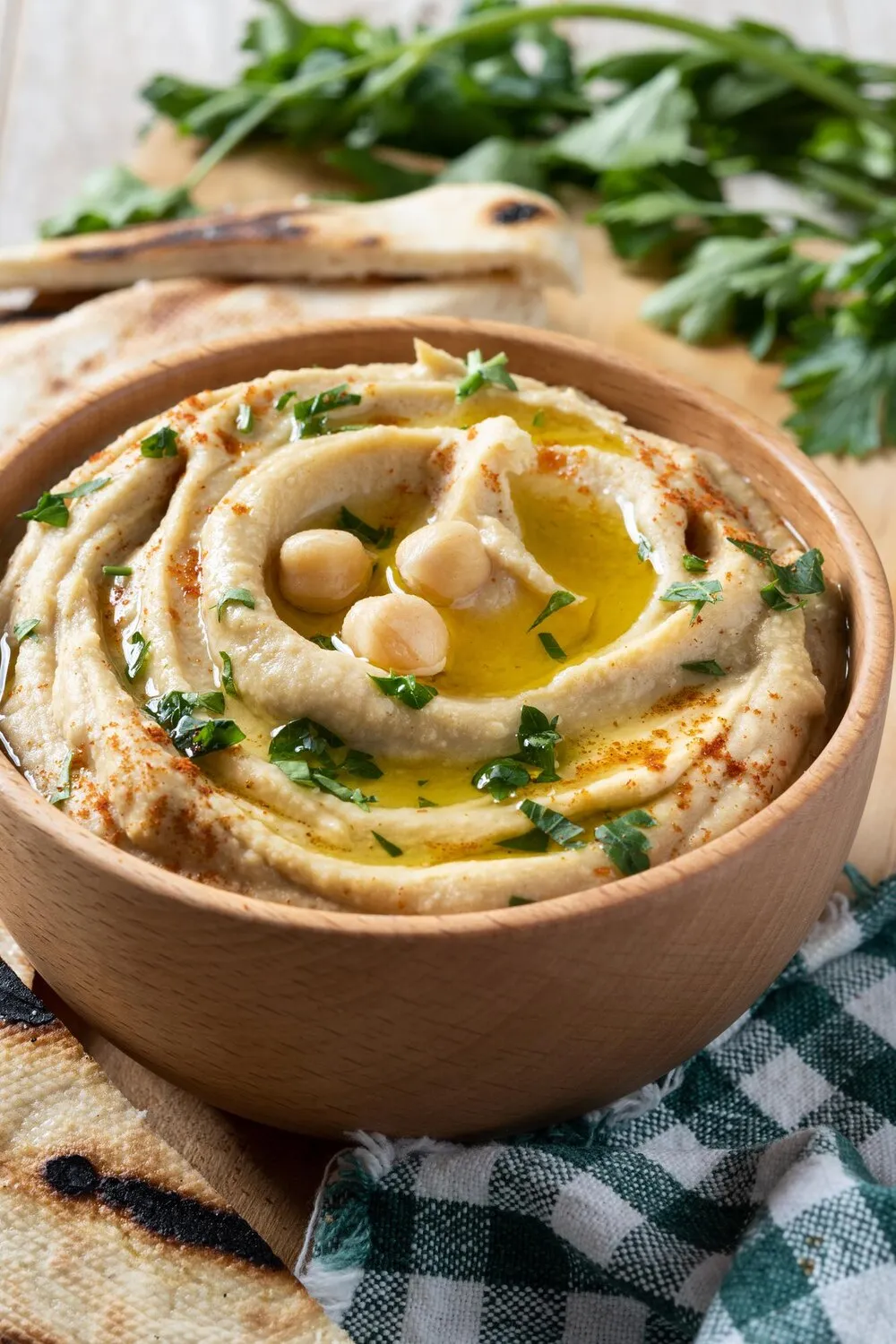
Homus
A dip or spread made from cooked, mashed chickpeas blended with tahini, lemon juice, and garlic.
Nutrition Facts
* The % Daily Value (DV) tells you how much a nutrient in a serving of food contributes to a daily diet. 2,000 calories a day is used for general nutrition advice.
Hummus has ancient roots in the Levant, with evidence suggesting variations of chickpea purees were consumed in the region for centuries. The exact origins are debated, but its popularity spread throughout the Middle East and Mediterranean, evolving into the creamy dip we know today. The combination of chickpeas, tahini, lemon, and garlic reflects the agricultural products and culinary traditions of the area.
Hummus is a staple food in many Middle Eastern and Mediterranean cultures, often served as part of a mezze platter or as a dip with pita bread, vegetables, or falafel. It represents hospitality, sharing, and communal eating.
Social Gathering Food
Hummus is frequently served at gatherings and celebrations, representing a welcoming and convivial atmosphere. Sharing a bowl of hummus is a common way to break bread and build community.
Everyday Staple
Beyond special occasions, hummus is a regular part of daily meals, enjoyed for its nutritional value, versatility, and affordability. It's a quick and easy snack or a nutritious addition to lunch or dinner.
Regional Variations
While the core ingredients remain the same, regional variations exist in the preparation and serving of hummus. Some regions may add specific spices or garnishes, reflecting local culinary preferences.
Hummus boasts a savory and tangy flavor profile, characterized by the earthy notes of chickpeas, the richness of tahini, and the bright acidity of lemon juice.
The dominant flavor is derived from the cooked chickpeas, providing a subtly sweet and nutty base. Tahini, a sesame seed paste, contributes a creamy texture and nutty, slightly bitter undertones. Fresh lemon juice adds a vibrant tanginess that balances the richness. Garlic provides a pungent kick, while olive oil enhances the overall smoothness and flavor depth. Spices like cumin and paprika can be added to customize the flavor profile, adding warmth and complexity.
Remove Chickpea Skins
Removing the skins from the cooked chickpeas results in an extra-smooth and creamy hummus. While this step is optional, it significantly improves the texture.
Use Iced Water
Adding iced water while blending helps create a light and fluffy texture. The cold temperature helps to emulsify the ingredients and prevent the hummus from becoming too dense.
Quality Tahini Matters
The quality of the tahini greatly impacts the flavor of the hummus. Opt for a high-quality, smooth tahini that is not overly bitter. Stir the tahini well before using it, as the oil tends to separate.
Don't Skimp on Lemon
Lemon juice is crucial for balancing the richness of the tahini and chickpeas. Adjust the amount to your taste, but don't be afraid to use a generous amount for a bright and tangy flavor.
Explore additional Middle Eastern dishes and restaurants
Explore Middle EasternDiscover top dining spots and culinary experiences in Osasco.
Explore OsascoLearn more about the food culture, restaurant scene, and culinary heritage of Brazil.
Explore Brazil